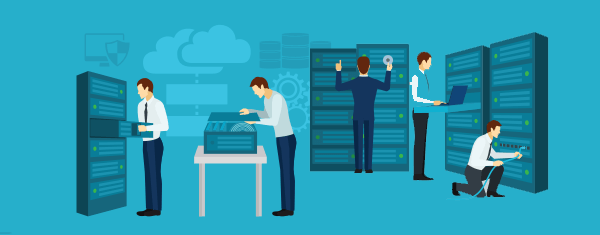Earlier, businesses had to establish a disaster recovery mechanism independently. So, critical data or applications could only be housed in local data centers. However, in order to ensure that this structure was reliable, one would have to spend a fortune. For most cases, a completely new data center had to be constructed from scratch. The idea was to have a structure in place where the critical data could be kept and ensuring that there is a smooth transition in case disasters happened on the primary data center. However, today maintaining such an infrastructure is definitely not a viable option. Now, cloud computing technologies and colocation solutions have stepped in and the universal choice for disaster recovery is a hybrid disaster recovery set-up.
How to Establish Cloud Based Disaster Recovery:
However, moving the data from a secondary facility to the cloud or a hybrid set-up is not going to be a cakewalk. It is a complicated process and there are many details which have to be looked into. The errors may also be extensive. This explains why there has to be a proper plan in place and tests done to make this transition smooth and hassle-free. The very first step is therefore to understand the entire IT environment which must be preserved when an emergency situation arises. You will need to identify functions and services that are likely to be most affected because of extended periods of downtime. You will then have to identify the resource needs and the long-term goals.
Next, you must understand what you will gain by giving up secondary data centers for a cloud based disaster recovery system. When your legacy data center had been functioning for many years, you will benefit from a streamlined infrastructure. You will be given access to a more direct plan for disaster recovery. The disaster recovery process is also going to be faster and trouble-free since data will typically reside in virtual hardware which is more flexible compared to fixed hardware. The biggest advantage without any doubt is the cost savings as the cloud model will be much lower in cost compared to a traditional disaster recovery model. You can get competitive pricing as many vendors are specializing now in DRaaS or Disaster Recovery as a Service solutions.
What to Remember When Choosing Cloud for Disaster Recovery:
- Since service agreements are likely to be complicated and lengthy, you have to read the fine print carefully as this will have effects on the new model’s performance. When you study the licensing agreement you get to know details of data replication, backups and disaster recovery technologies. You need to realize that if you can get along without these services, you should not unnecessarily buy them.
- While DRaaS may be simple to manage, it does need training. MSPs or Managed Service providers which specialize in disaster recovery can help you secure the environment when your in-house staff deploys the new disaster recovery operations.
- There are some costs which may be unique to a company. So, a long term contract may have to be terminated or some aspects of the model may undergo changes because of the transition. This is why if you can forecast your costs in advance, it can help to avoid surprises in the long run.
Gravitating towards a multi cloud turns out to be beneficial because you get the freedom to select the right vendor for the right services. It also helps to lessen dependency on any one vendor. In terms of disaster recovery solutions, the multi cloud strategy will greatly cut down chances of a single incident knocking down an entire company’s IT set-up. It will also provide for excellent customer services to clients even when there is peak traffic. This feature of multiplicity of clouds is also useful because when there is competition, you can get better quality of services for lower costs.
It is Possible to Measure Disaster Recovery using two Metrics:
- The first is RTO or Recovery Time Objective which refers to the duration for which a business can go on without critical resources.
- The second is RPO or Recovery Point Objective which refers to the amount of data that can be lost during a given event.
Very few businesses can afford to undergo a long period of downtime especially where their services or critical apps are concerned. This is why it is very essential to let go of the old backup infrastructures and adopt a new cloud hybrid approach. The cloud will not only offer you more reliability and speed; it will also offer solutions like edge computing which helps to keep the data near those who must have access to it. The cloud therefore offers a far better approach to disaster recovery in the same way as it has for so many other IT services. Hybrid cloud solutions will offer cost-savings, time-savings and resource usage benefits and, at the same time, they improve DR.
Read More at : Recovery Time Objective (RTO) vs. Recovery Point Objective (RPO)






 Live Chat
Live Chat